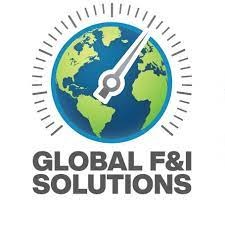
The Impact of Tariffs on the U.S. Auto Industry
The current state of the U.S. auto industry is anything but stable, and the ripple effects of recent trade tariffs are significantly reshaping the landscape. Following the Trump administration’s implementation of increased import duties, the AutoForecast Solutions analysis highlights a troubling trend: U.S. auto sales may decline by 6% this year. This reduction can be attributed to buyers racing to purchase vehicles before prices surge due to tariffs.
Auto Sales Trends: Past Performance and Future Predictions
Despite a modest 2.6% increase in auto sales during the first half of the year, the future seems bleak. Sam Fiorani, an analyst at AutoForecast Solutions, predicts that sales will not return to the pre-tariff peak of 16 million units annually until well into the next decade. The higher costs, driven by tariffs, are predicted to push entry-level models out of the U.S. market, effectively choking off new vehicle options for budget-conscious buyers.
Challenges Facing Automakers
The woes of the automotive industry are underscored by the financial troubles of major players. Volkswagen, Ford, and Nissan reported staggering losses in recent quarterly earnings. With heightened tariffs making previously affordable vehicles unattainable for many consumers, the industry faces a potential reckoning. Fiat Chrysler, a maker of sizable vehicles, is particularly feeling the pressure, as foreign markets often do not cater to the larger automobile configurations that dominate American roads.
U.S. Automakers and Global Demand
As cost-effective import options diminish, the expectation that U.S. manufacturers can pivot to export models may be overly optimistic. The report suggests a lack of international demand for U.S. vehicles, primarily due to size incompatibilities and market reception. The expectation that rising domestic prices would influence international sales might not play out as anticipated.
Navigating Future Tariff Landscape
Even with potential negotiations lowering tariffs to 15%, this remains considerably higher than historic levels. Auto industry leaders must consider strategic pathways to counteract impending price hikes. Developing smaller, more efficient vehicles that cater to different markets could be an essential step to stay competitive. Innovations in financing through digital business models may also play an important role as firms adapt to these challenges.
The automotive sector’s intersection with consumer finance will also become crucial. Creating accessible auto sales training tailored towards new finance models, including subprime loans for cars and used car financing strategies, will allow dealerships to respond more effectively to evolving consumer needs.
Concluding Thoughts and Call to Action
The looming decline in U.S. auto sales presents critical challenges for dealership owners and general managers. Understanding the evolving tariffs, coupled with financial strains being faced by automakers, is essential for navigating the tumultuous landscape. To stay ahead, consider investing in automotive training programs that can equip your staff with the necessary skills to adapt and thrive.
For more info, call: (860) 707-9125
 Add Row
Add Row  Add
Add 




Write A Comment